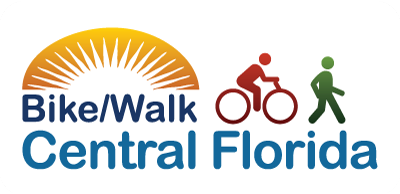Beginning in 1935, the Manual on Uniform Traffic Control Devices (MUTCD) has set the national standard for the design of roads and street signs. It serves as a foundational document in which our roadways are designed and built, and is used by city engineers, designers, urban planners, safety advocacy groups, government officials and others to ensure safer and more efficient roadways. The latest edition was released and is over 1,000 pages long. The manual is updated about every decade or so, although, going forward, that will now change every four years.
This comprehensive guide, last updated in 2009, serves as the national standard for traffic signs, signals and pavement markings, shaping the infrastructure that impacts millions of lives every day. This update includes friendlier policies towards people who walk and bike which hasn’t been as apparent in previous iterations of the MUTCD. And with more than 40,000 people dying on U.S. roads each year, the manual was long due for an overhaul.
Key Updates to the MUTCD
- Use of pedestrian safety measures to improve visibility and reduce accident.
- Rectangular rapid-flashing beacons (RRFB)
- Enhanced crosswalk marking patterns
- The MUTCD will now be updated every 4 years instead of every decade or so.
- This is crucial to ensuring that the standards and guidelines in the manual respond to evolving transportation needs and emerging technologies.
- FHWA is enhancing accessibility and usability through new online tools, including an improved database of official resources about the MUTCD’s development process.
- Speed limits will now be determined by local safety needs , rather than the speed dictated by how fast drivers drive on any particular roadway.
- This new approach to determining speed limits encourages better street design to prevent speeding.
- Separated bike lanes and red-painted bus-only lanes are now approved design options.
- Unfortunately, green-backed shared lane markings and dedicated bike signals, which have been proven to be effective, are not permitted.
But More Can Be Done
As a pedestrian safety organization, we are delighted to see the improvements made to the latest version of the MUTCD and it undoubtedly represents progress towards safer roadways, but with pedestrian deaths at a forty-year high, it’s important to recognize that the changes made don’t go far enough in addressing all safety concerns.
Dr. Kelly Brock, who is the current Board Chair of Bike/Walk Central Florida and an engineer who has been nationally recognized for his complete streets efforts, states “The MUTCD is not just a tool used by engineers. It is a set of standards we feel bound to and often limited by. I shudder to think how often the phrase ‘because it doesn’t meet the standard’ has actually resulted in a more dangerous street that alienates (and sometimes contributes to the death of) people walking and biking. If the MUTCD is to be the standard, then it must live up to that honor. It must employ the latest and best tools to achieve an equitable transportation system with zero deaths and serious injuries. It must be updated more often and must continue to shift the focus to the most vulnerable users. It must continue to become a better tool for engineers to build truly better, safer streets – rather than an excuse not to.”
While these policy updates are critical for the safety of people that walk and bike , additional safety measures are needed to comprehensively address the diverse range of challenges faced by road users. A major challenge being that city engineers often, and are encouraged to, wait until people are hurt or killed before making engineering improvements like installing a traffic signal or a RRFB, instead of taking a proactive stance on safety. Factors such as increasing vehicle volumes, distracted driving and the growing popularity of alternative modes of transportation necessitate a more holistic approach to road safety. Ongoing efforts to innovate and implement additional safety measures, coupled with continued public engagement and collaboration, are essential to create truly safe and inclusive transportation networks for everyone.
For those interested in exploring the latest version, click the image below to view the complete MUTCD manual.


